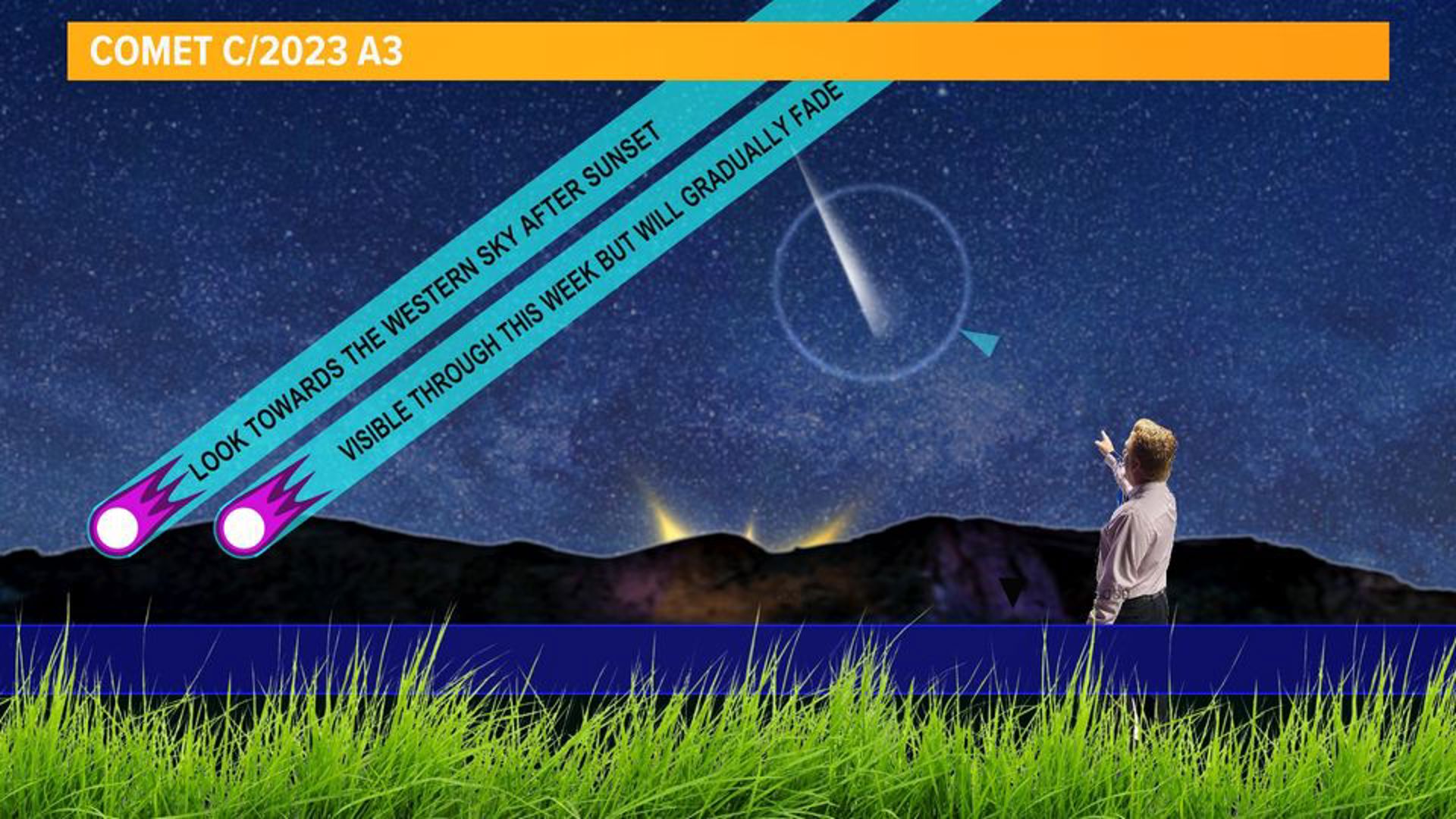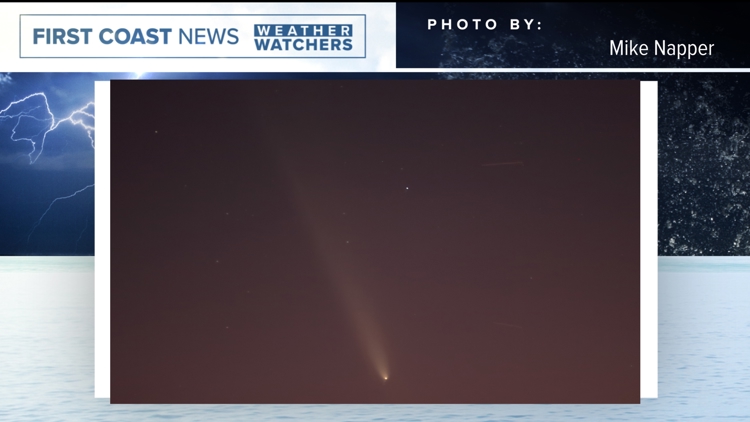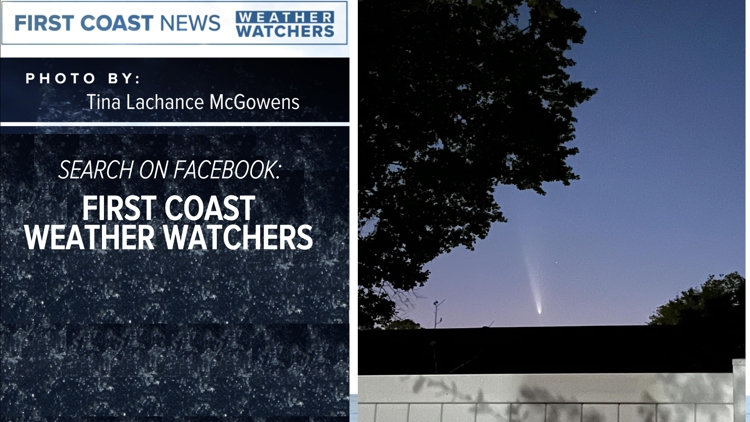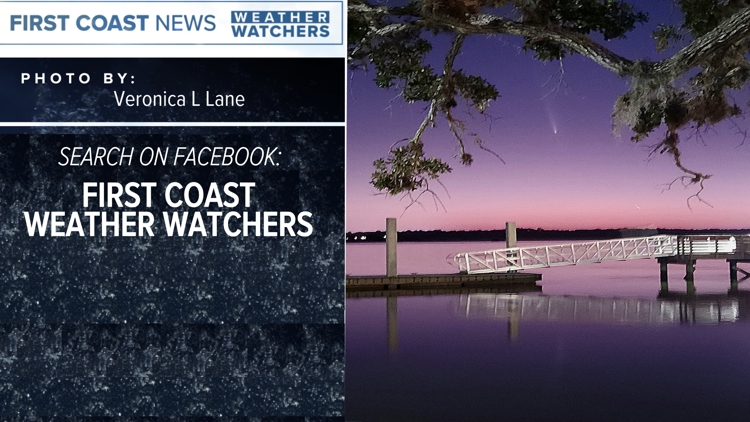JACKSONVILLE, Fla. — If you missed last week's auroras that lit up the skies along the First Coast, don’t worry! There’s still plenty to see in the night sky, including a rare astronomical event that could soon be visible to the naked eye.
We stopped by Hanna Park to catch up with the Northeast Florida Astronomical Society (NEFAS) during their monthly meetup and learned about some things in the night sky you can witness right here in Jacksonville.
Comet C/2023 A3: A Once-in-a-Lifetime Event
According to NEFAS member Mike Napper, a rare Comet C/2023 A3 (Tsuchinshan-ATLAS)—is starting to make its way into the western sky after sunset. Napper shared his excitement about this long-period comet, stating:
“Got a comet that's starting to clear the horizon in the west after sunset. The next few days won't be great, but after that, it could be visible—even a naked-eye object with a long tail.”
Comet C/2023 A3 is an extraordinary astronomical object. Its orbit takes approximately 80,000 years to complete, making this a once-in-a-lifetime event. The comet is expected to reach its peak brightness and become visible to the naked eye in the coming days, before it begins to drift farther away from Earth.
“It's going to be as bright or get as close to Earth as it can be in the next few days, and then it'll start moving farther and farther away. We’re all hoping to catch that first glimpse of it this week!” NEFAS member Terry Ellis added.
For the best viewing, look west just after sunset. This marks the first naked-eye comet since Comet NEOWISE in 2020. Given its rarity and potential for a long, visible tail, Comet C/2023 A3 may surprise people.
What Else Can You Spot in Jacksonville’s Night Sky?
While Comet C/2023 A3 is the main attraction, there’s plenty more to see. Venus shines brightly in the evening western sky after sunset, and Saturn, with its rings, is also visible. The NEFAS team encourages everyone to get out and stargaze. If you’re not sure where to start you can meet up with them at their monthly meetup.
“Come out here to Hanna Park once a month on the Saturday closest to the first quarter moon, so people can look through our telescopes,” Napper said.
So, even if you missed the recent auroras, keep your eyes on the sky this week.







